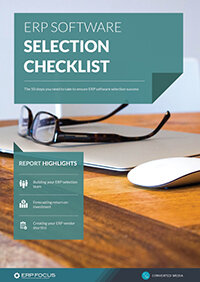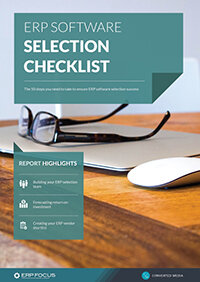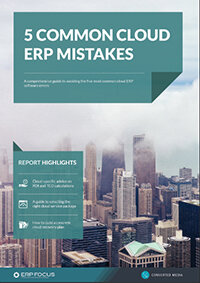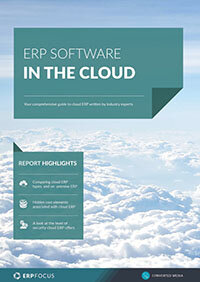On-premise to cloud ERP: 3 tips for making the switch
“Measure twice, cut once”, as the venerable English carpentry rule goes. However, when considering an implementation plan driven by the premise of transitioning from an on-premise to cloud ERP system, a 16th century Russian version works even better; “Measure seven times, then cut.”
Either way you should get the point by now; when it comes to moving a complex resources-based system from one platform to another, you simply can’t be too careful. Although on-premise systems continue to offer a host of values to enterprise operators, the die has generally been cast, so whether you are a mid-sized company or an emerging large-scale operation, most of today’s technology focus is being placed on cloud ERP. Granted, there a number of apparent reasons for this movement, including an assertion of greater scalability and a suggestion of greater flexibility over time. But what gets many businesses excited about cloud ERP is the potential of off-loading typically dense infrastructure responsibilities by having ‘someone else’ do all of the heavy lifting at the utility-level.
Recommended reading: 50-Step ERP software selection checklist
While there may be some truth to be had when pondering these claims regarding cloud ERP, before you get ready to make the switch, there are a number of areas you should consider.
1. Prepare for infrastructure management changes
From a management perspective, on-premise means that everything is typically driven by an enterprise-centric hardware and networking focus. However, when considering a cloud ERP system that focus disappears, and is instead replaced by an end-to-end management challenge. In the event of a migration from on-premise to cloud ERP, the only thing an enterprise cadre can do is plan for major restructuring of infrastructure management.
2. Expect an expansion of change management responsibilities
Cloud-based ERP systems are all the rage, and as previously mentioned, there are all kinds of assertions associated with the topology using words like, ‘faster, cheaper, and more flexible.’ That said, if these systems were all of those things and easy to boot, the newly adopted technology wouldn’t require consulting partners, trainers, data-centers, or pure cloud environments.
what gets many businesses excited about cloud ERP is the potential of off-loading typically dense infrastructure responsibilities
Consequently, rather than actually ‘reducing’ an enterprise’s level of effort, management requirements typically experience an expansion, since on top of the typical complexities associated with implementing any new ERP system, one also has to deal with time lags related to virtuality, on top of integrating new system stakeholders who may or may not be compliant with a company’s particular system culture.
3. Create a clear change management plan
By now the reader might be able to discern a bit of a theme here, and it goes something like this; many complexities associated with an on-premise ERP system are exacerbated by at least an order of magnitude up in the cloud, due to the ‘third-party’ nature of the platform itself. This means managers have to do more planning; more training; more internal constituent confidence-building, and in general, more thinking about ‘who/how/what’ an enterprise leverages on a daily basis.
Consequently, unless these elements are understood and supported by a clear and unbending intellectual commitment, percentages associated with any successful implementation go down, not up, which interestingly, is why so many ERP platforms fail in the first place. So, at the end of the day, and to expand on our original thought, ‘measure as many times necessary; then measure again just to be sure before one cut’s’, otherwise you will just be leaving money on the table.
Free white paper

60-Step ERP Selection Checklist
Get the comprehensive checklist for your ERP selection project

Featured white papers
-

Five common cloud ERP mistakes
Get your comprehensive guide to avoiding the five most common cloud ERP errors
Download -

Related articles
-

A beginner’s guide to ERP integration
What is ERP integration, why it matters, and more!
-

CMMC Compliance: What Aerospace and Defense Manufacturers Need to Know
Key insights on CMMC compliance, deadlines, and securing DoD contracts with CMMC 2.0 certificatio...
-

When is it time to replace a legacy ERP system?
Replacing your legacy ERP system with new software can revitalize your business operations.

